Cabernet Sauvignon was king when I first started drinking Chilean wines some 20 years ago. And not just Cabernet in general, but specifically bargain priced Cabernet. Most wine drinking folks I know rifled through bottles of $6 or so Cabernet Sauvignon looking for gems; we found quite a few. And for many people that’s the lingering impression of Chilean Wine. The trouble is it’s no longer a valid image. Sure you can still find a bargain and some of them are Cabernet Sauvignon, but there is so much more Chilean wine on U.S. shelves deserving your attention and your dollars that it would be a real shame to limit yourself. I knew this before I went to Chile last week. So one of my goals in visiting was to verify it and see what they had going on that might be less obvious from 5,000 miles away. So I’ve compiled a handful of strong impressions of Chilean Wines gleamed from the trenches.
- Argentina gets the attention but Chile makes some ass kicking Malbec: It’s Argentina’s signature grape so they should be at the forefront. In some ways they are, the general public thinks about Argentina first for Malbec. Some of them are terrific, but unfortunately way too many examples are made in an overtly fruit forward style with a lackluster body and no finish to speak of. I was a little surprised with the number of Malbecs I got to taste in Chile. While I knew it was there, its presence is larger than I would have guessed. More importantly the ones I tasted where almost all uniformly well made. By and large they were elegant, balanced and well proportioned. Often times they were made from old vine fruit. I hope we start seeing Chilean Malbec on our shelves in reasonable numbers soon.
- Tiers baby: I’ve often written about wineries like Rodney Strong in Sonoma County whose tiered approach to their portfolio is consumer friendly. This is true in a very large percentage of Chilean Wineries. They often have 3 or 4 tiers of wine. Often the entry-level wines retail for around $10 on our shelves and they have a top-level that might reach into the $30’s and $40’s, as well as occasionally higher. In between are wines in the teens and $20’s. What’s remarkable is that there is more often than not quality, value, and diversity to be had at each tier. In Chile wineries that produce what we view as very large quantities of wine often do so at a high level. One of the main reasons for this is simple: estate fruit. By owning the vineyards outright or having fruit under long-term contract they have a say in precisely how the vineyards are maintained. This can (and often does) lead to high quality in the bottle at each price point. The intent of a producer’s $8 Sauvignon Blanc and their $20 one are often quite different as are their appeals and projected end user. But what's important is getting value regardless of price; in Chile that is often the case.
- There are some delicious small production wines being made: Sure there are lots and lots of excellent Sauvignon Blancs coming from Chile and some tasty Pinot Noirs now too, but that’s not all. I had the opportunity to taste a delicious and marvelously dry Gewürztraminer made by Nimbus (part of the Santa Carolina Family of wines), as well as a lovely sparkling wine from Cono Sur to name a couple. Viognier is making some ripples in Chile too and hopefully before long we’ll see a greater number of them available in the US as well. I've mentioned a few whites but the same can be said for reds. More than one example of varietal Petit Verdot I had was lovely as were a couple of tastes of Carignan. In some cases these wines aren't on our shelves in the US yet, but they’re important to mention for the coming diversity and quality they represent.
- Blends will set Chile apart: Almost every winemaking culture has some blends. In places like Bordeaux they’re everything. In a lot of other places, well quite frankly they’re doing their best to mimic Bordeaux. Certainly Chile works to make great wine and learning lessons from places like Bordeaux or Napa to name two examples is part of the equation. But I also got the very strong sense that Chile is happy to be writing their own rule book when it comes to blends. Sure some of them contain the usual suspects of Bordeaux varietals. However grapes like Carménère that have been marginalized or fallen by the wayside in Bordeaux often steal the show in Chile. Additionally with red blends Syrah often makes a mark too as well as some others. Some of the most impressive wines from Chile I’ve tasted over the last 5 years have been blends. This remained constant on my trip last week where I tasted lots of delicious blends. It’s important to note that with blends like with varietal wines there are values at many price levels.
- Chilean Cabernet Sauvignon can still be a great value: While there are no longer boatloads of awesome deals on $6 Cabernet Sauvignon there are still many deals to be had. Cabernet Sauvignon from Chile when it’s grown in the right spot and treated properly in the winery can blow away a lot of countries on QPR. What I found on this trip is that the Cabernets in the $15-$25 range were particularly noteworthy in terms of value. These are balanced wines that are often perfect for everyday enjoyment as well as drinking over the next few years. At a higher cost there are some truly age-worthy wines. One example was the Casa Real Cabernet Sauvignon from Santa Rita. We tasted both the current release (2009) and a 15 year old bottle (1997). Jameson Fink, a fellow writer who was on the same trip wrote about this particular experience and it’s well worth a read.
- Diversity is King of Chile now: Everywhere we went there was something unique to taste. In some cases it was a Sparkling Rosé made from an almost lost grape. Sometimes it was a Moscato that stunned us all by how lovely and dry it was. On one occasion it was an Old Vine Sauvignon Gris. These are just a couple of examples. Chilean winemakers are experimenting in the vineyards with new farming techniques as well as plantings of new varietals or the reclamation of abandoned old vineyards. In the Winery they’re also experimenting with how they utilize oak, what they blend together and frankly just about every decision they make. What that means to us is we’re going to get to taste a wide swath of different wines from Chile.
In short I was pretty knocked out by what they have going on in Chile. I’ve really enjoyed drinking the wines from there for a long time now. But in 2012 instead of thinking of them for one thing, I think of Chile for an ever widening variety of different varietals, blends and more. Grab some Chilean wines and taste the quality, value and diversity I was lucky enough to witness firsthand.
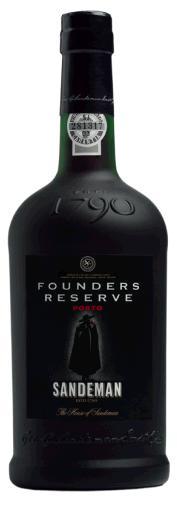 A couple of years ago I was in Portugal and it’s fair to say I encountered a great surprise. There was no question that there would be excellent Port to sample in both Oporto and the Douro. What I didn’t expect was the flexibility of some Ports as a blending component in cocktails. Towards that end I took place in a class with a Mixologist and was pleasantly surprised with the results. I tend to think of Port more in the winter months and with the weather getting nippy it’s high time to drink more Port. With that in mind I tried my hand making a couple of drinks using Sandeman Founders Reserve Port.
The first drink is from Sandemans own recipe.
A couple of years ago I was in Portugal and it’s fair to say I encountered a great surprise. There was no question that there would be excellent Port to sample in both Oporto and the Douro. What I didn’t expect was the flexibility of some Ports as a blending component in cocktails. Towards that end I took place in a class with a Mixologist and was pleasantly surprised with the results. I tend to think of Port more in the winter months and with the weather getting nippy it’s high time to drink more Port. With that in mind I tried my hand making a couple of drinks using Sandeman Founders Reserve Port.
The first drink is from Sandemans own recipe.
 Last week I was lucky enough to sit and taste wine over dinner with Bernard Portet at
Last week I was lucky enough to sit and taste wine over dinner with Bernard Portet at 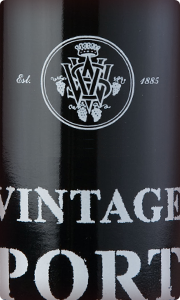 V. Sattui Winery
V. Sattui Winery When I was in Chile last month I participated in a virtual Blogger tasting. I’d taken part in previous tastings of that kind from home before. But on this occasion I was onsite in an adjacent room while the winemakers discussed their varied offerings a few feet away. Getting to mingle with a roomful of winemakers before and after the tasting was one of many highlights that dotted a wonderful week in Chile. There were several standouts for me that day; one of them came from producer
When I was in Chile last month I participated in a virtual Blogger tasting. I’d taken part in previous tastings of that kind from home before. But on this occasion I was onsite in an adjacent room while the winemakers discussed their varied offerings a few feet away. Getting to mingle with a roomful of winemakers before and after the tasting was one of many highlights that dotted a wonderful week in Chile. There were several standouts for me that day; one of them came from producer  The Ventisquero 2010 Grey Carmenère was produced from fruit sourced at Trinidad Vineyard in Chile’s Maipo Valley. This is a 100% varietal offering. Fermentation took place in stainless steel tanks followed by aging in French oak over 18 months. 33% of the barrels utilized were new. An additional 8 months of bottle aging occurred prior to release. This wine has a suggested retail price of $23.99. Boysenberry, vanilla and violet aromas burst out from the nose of this Carmenère. The palate is juicy and pleasing with plums, blackberry and berry fruit flavors galore. Green herb notes underscore things here and play a supporting role. Black tea, plum pudding spices, minerals and black pepper all emerge on the finish. There is a lovely balance in this wine with loads of eager fruit buoyed by lots of spice and a lovely collection of herbaceous characteristics. The Ventisquero Carmenère works equally well paired with full flavored foods as it does on its own.
The Ventisquero 2010 Grey Carmenère was produced from fruit sourced at Trinidad Vineyard in Chile’s Maipo Valley. This is a 100% varietal offering. Fermentation took place in stainless steel tanks followed by aging in French oak over 18 months. 33% of the barrels utilized were new. An additional 8 months of bottle aging occurred prior to release. This wine has a suggested retail price of $23.99. Boysenberry, vanilla and violet aromas burst out from the nose of this Carmenère. The palate is juicy and pleasing with plums, blackberry and berry fruit flavors galore. Green herb notes underscore things here and play a supporting role. Black tea, plum pudding spices, minerals and black pepper all emerge on the finish. There is a lovely balance in this wine with loads of eager fruit buoyed by lots of spice and a lovely collection of herbaceous characteristics. The Ventisquero Carmenère works equally well paired with full flavored foods as it does on its own. The Rodney Strong Vineyards 2011 Charlotte’s Home Sauvignon Blanc was produced from fruit sourced in Alexander Valley and Russian River Valley. 90% was fermented in temperature controlled stainless steel at low temperatures; the balance in French oak. This widely available wine has a suggested retail price of $15 but can most often be found selling for closer to $11. Lemon ice, white pepper and mineral aromas fill the excitable nose of this 2011 Sauvignon Blanc. Citrus characteristics dominate the palate along with bits of orchard fruit and a gentle hint of pineapple as well. The finish is clean and crisp with mineral and spice notes reverberating well after the last sip has been swallowed. Year after year this wine delivers awesome flavor for a very small price. This is a terrific Sauvignon Blanc for the money and one you can bank on one vintage after another.
The Rodney Strong Vineyards 2011 Charlotte’s Home Sauvignon Blanc was produced from fruit sourced in Alexander Valley and Russian River Valley. 90% was fermented in temperature controlled stainless steel at low temperatures; the balance in French oak. This widely available wine has a suggested retail price of $15 but can most often be found selling for closer to $11. Lemon ice, white pepper and mineral aromas fill the excitable nose of this 2011 Sauvignon Blanc. Citrus characteristics dominate the palate along with bits of orchard fruit and a gentle hint of pineapple as well. The finish is clean and crisp with mineral and spice notes reverberating well after the last sip has been swallowed. Year after year this wine delivers awesome flavor for a very small price. This is a terrific Sauvignon Blanc for the money and one you can bank on one vintage after another.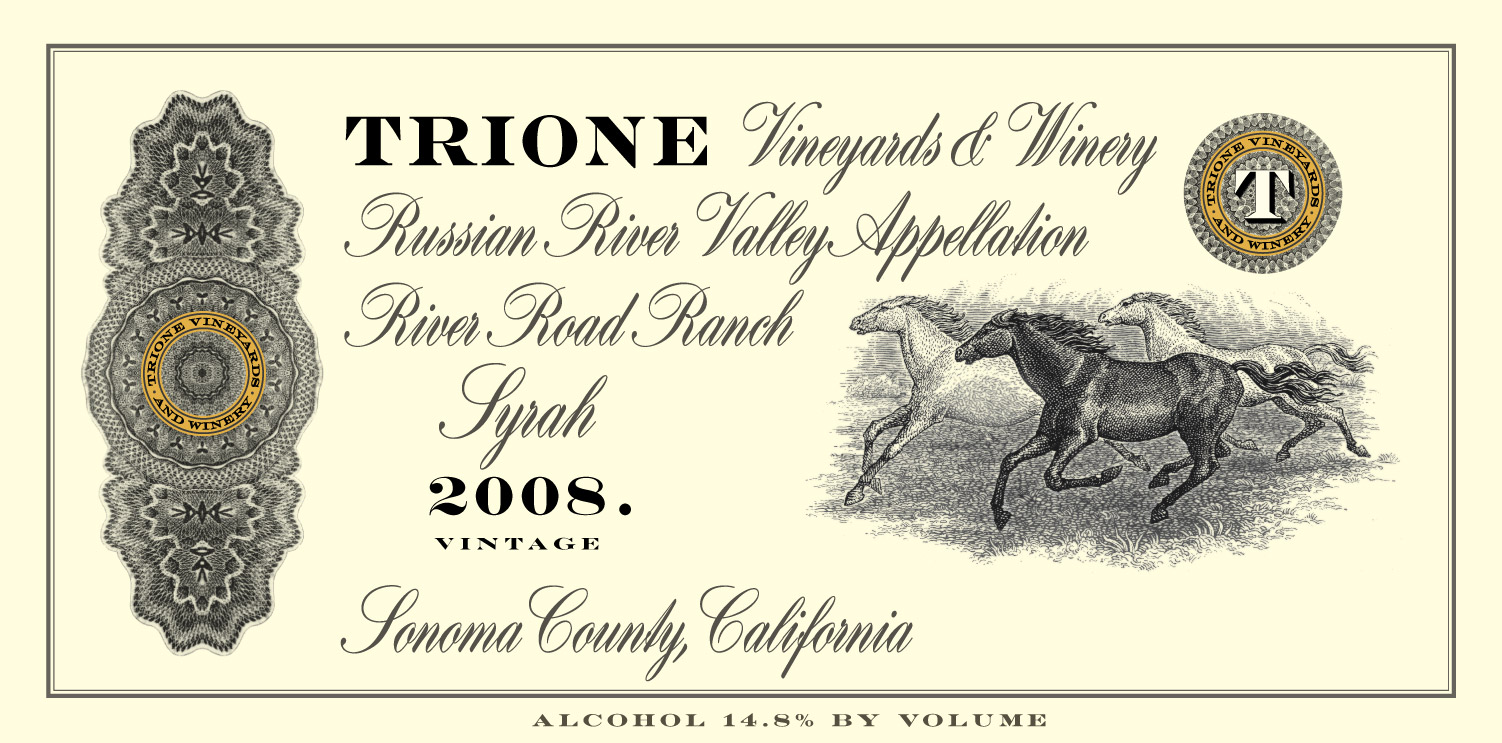 For more than 30 years the Trione Family has been growing and selling grapes in Sonoma County from their own property as well as vineyards they manage. In 2005 they launched
For more than 30 years the Trione Family has been growing and selling grapes in Sonoma County from their own property as well as vineyards they manage. In 2005 they launched  Terroir is one of those ideas that is thrown around a lot as a buzz word in the wine industry. Depending on who it is bringing it up there can be a bit of controversy surrounding it. And while it may seem a little out there to some folks to think that Cabernet Sauvignon for example planted in a specific spot can be imbued with very different characteristics than a Cabernet Sauvignon planted a few hundred feet away, the truth is in the bottle. All one really needs to better understand the concept of Terroir is a taste, once you’ve experienced it first hand it’s easier to believe. Of course it’s a sliding scale and not every wine or more specifically every place will impart that. Furthermore some wines are made in such a style that their Terroir ends up being masked. That’s a different part of the subject for another day. This is about wines that do show their sense of place. I attended Vinos De Terroir hosted by Wines of Chile. The concept was a focused look at 10 great examples of Terroir driven wines from Chile. The event took place at
Terroir is one of those ideas that is thrown around a lot as a buzz word in the wine industry. Depending on who it is bringing it up there can be a bit of controversy surrounding it. And while it may seem a little out there to some folks to think that Cabernet Sauvignon for example planted in a specific spot can be imbued with very different characteristics than a Cabernet Sauvignon planted a few hundred feet away, the truth is in the bottle. All one really needs to better understand the concept of Terroir is a taste, once you’ve experienced it first hand it’s easier to believe. Of course it’s a sliding scale and not every wine or more specifically every place will impart that. Furthermore some wines are made in such a style that their Terroir ends up being masked. That’s a different part of the subject for another day. This is about wines that do show their sense of place. I attended Vinos De Terroir hosted by Wines of Chile. The concept was a focused look at 10 great examples of Terroir driven wines from Chile. The event took place at 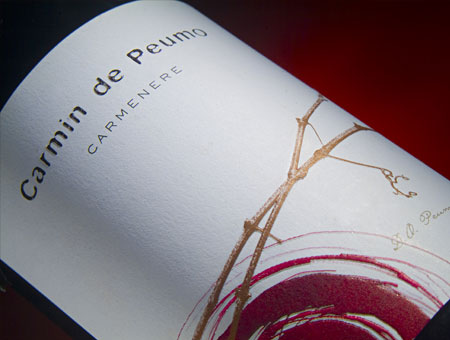

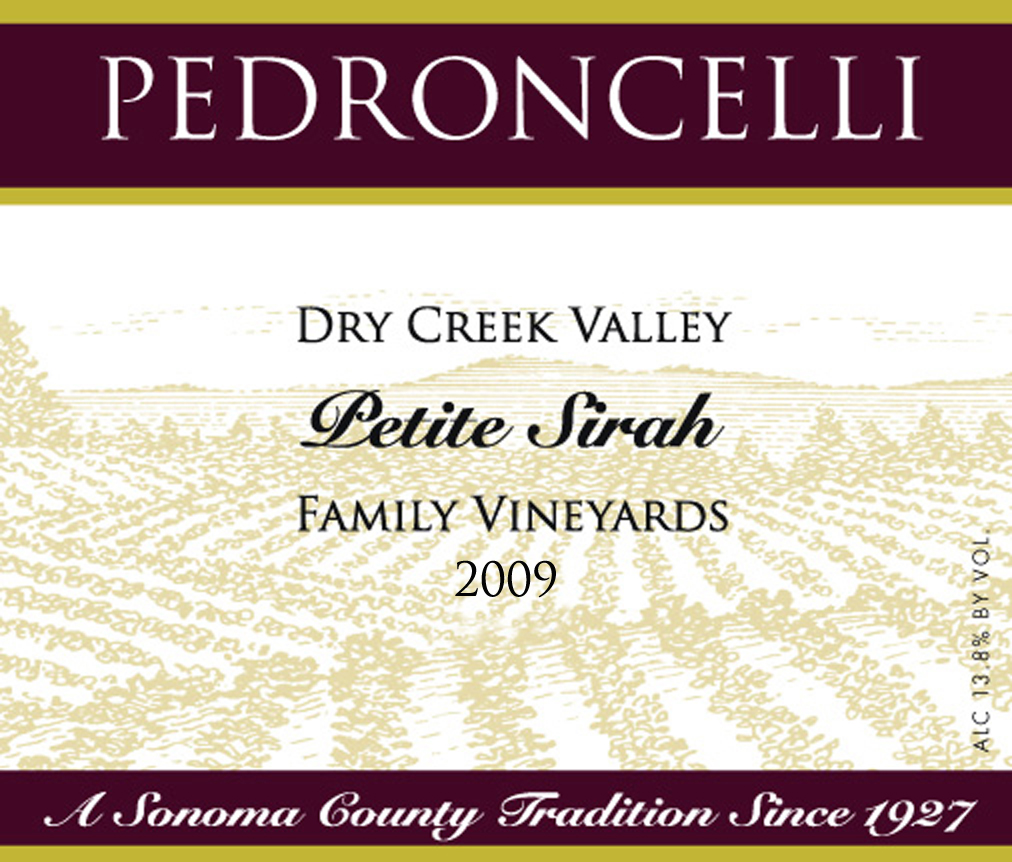 If there’s a better Petite Sirah for under $20 than the one
If there’s a better Petite Sirah for under $20 than the one 
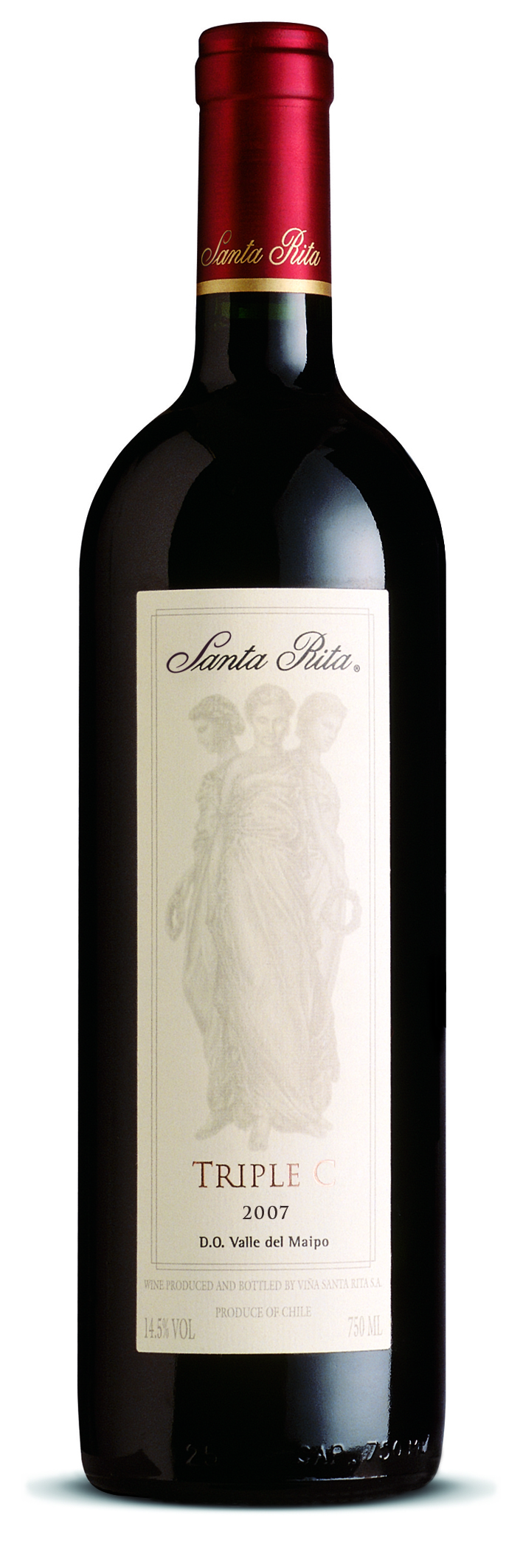 Santa Rita 2009 Medalla Real Cabernet Sauvignon D.O. Maipo Valley: This wine is predominately Cabernet Sauvignon (95%) with a touch of Cabernet Franc (5%) blended in. The vines utilized have 15 years of age on them. Barrel aging occurred over 14 months in a combination of 1st, 2nd and 3rd use oak. The Medalla Real range of wines has a suggested retail price of $19.99. This wine has a classic Cabernet Sauvignon nose of red and black berries laced with hints of toast and wisps of vanilla bean. Boatloads of cherry flavors dominate the palate and lead to pomegranate characteristics on the finish along with earth and black pepper. This is a remarkable Cabernet Sauvignon for under $20. A Cabernet of this quality, depth and persistence from Napa Valley to use one point of comparison would easily fetch $35-$40.
Santa Rita 2009 Medalla Real Cabernet Sauvignon D.O. Maipo Valley: This wine is predominately Cabernet Sauvignon (95%) with a touch of Cabernet Franc (5%) blended in. The vines utilized have 15 years of age on them. Barrel aging occurred over 14 months in a combination of 1st, 2nd and 3rd use oak. The Medalla Real range of wines has a suggested retail price of $19.99. This wine has a classic Cabernet Sauvignon nose of red and black berries laced with hints of toast and wisps of vanilla bean. Boatloads of cherry flavors dominate the palate and lead to pomegranate characteristics on the finish along with earth and black pepper. This is a remarkable Cabernet Sauvignon for under $20. A Cabernet of this quality, depth and persistence from Napa Valley to use one point of comparison would easily fetch $35-$40.

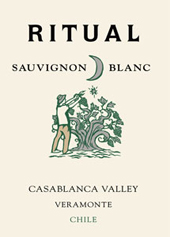 Veramonte – 2011 Ritual Sauvignon Blanc – This wine is richer and riper than the entry level Sauvignon Blanc. The palate has a bit more heft than the average Chilean Sauvignon Blanc. It’s a spicy and round wine with a mineral laden finish. Most of the fruit was sourced from two high performing blocks. Their goal of proactive farming as opposed to winery manipulation shines through in this release.
Veramonte – 2011 Ritual Sauvignon Blanc – This wine is richer and riper than the entry level Sauvignon Blanc. The palate has a bit more heft than the average Chilean Sauvignon Blanc. It’s a spicy and round wine with a mineral laden finish. Most of the fruit was sourced from two high performing blocks. Their goal of proactive farming as opposed to winery manipulation shines through in this release. We proceeded to walk a few blocks to
We proceeded to walk a few blocks to 
 Tenuta di Vignole is owned by the Nistri Family who has been involved locally in the wine business since the mid 1800’s. They acquired their 21 hectares of winery property in 1970. Their focus of course is on making Chianti. I recently had a chance to taste some of their wines alongside family member Fabrizio Nistri. They were, on the whole, delicious well made wines but one stood above the others for me and I’ll look at it today.
The Tenuta di Vignole – 2006 Vignole Chianti Classico Riserva is produced from fruit sourced in the Panzano section of Chianti Classico. This offering is a blend of predominately Sangiovese (85%), with some Cabernet Sauvignon (15%) utilized as well. The fruit was handpicked and individual lots were fermented in concrete vats. Barrel aging took place over 20 months in a combination of 225 liter barriques and larger 400 liter vessels. After that time the lots were assembled and another 3 months of barrels aging commenced followed by 6 or more months of bottle aging. 1,200 6 pack cases of this wine were produced and it has a suggested retail price of $59.99.
Tenuta di Vignole is owned by the Nistri Family who has been involved locally in the wine business since the mid 1800’s. They acquired their 21 hectares of winery property in 1970. Their focus of course is on making Chianti. I recently had a chance to taste some of their wines alongside family member Fabrizio Nistri. They were, on the whole, delicious well made wines but one stood above the others for me and I’ll look at it today.
The Tenuta di Vignole – 2006 Vignole Chianti Classico Riserva is produced from fruit sourced in the Panzano section of Chianti Classico. This offering is a blend of predominately Sangiovese (85%), with some Cabernet Sauvignon (15%) utilized as well. The fruit was handpicked and individual lots were fermented in concrete vats. Barrel aging took place over 20 months in a combination of 225 liter barriques and larger 400 liter vessels. After that time the lots were assembled and another 3 months of barrels aging commenced followed by 6 or more months of bottle aging. 1,200 6 pack cases of this wine were produced and it has a suggested retail price of $59.99.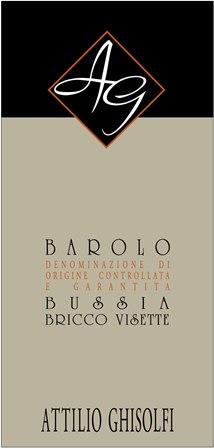 There is hardly a more enlightening way to taste wine than at the side of the winemaker who shepherded it into the world. So whenever the opportunity arises to taste in that manner I do everything I can to take part. A few weeks back I was fortunate enough to taste alongside a couple of Italian winemakers. One of them Gianmarco Ghisolfi was there presenting his family wines made in Piedmont. By and large he poured some lovely selections, but my favorite was his 2006 vintage of Barolo, which I’ll look at today.
The
There is hardly a more enlightening way to taste wine than at the side of the winemaker who shepherded it into the world. So whenever the opportunity arises to taste in that manner I do everything I can to take part. A few weeks back I was fortunate enough to taste alongside a couple of Italian winemakers. One of them Gianmarco Ghisolfi was there presenting his family wines made in Piedmont. By and large he poured some lovely selections, but my favorite was his 2006 vintage of Barolo, which I’ll look at today.
The 
 I first tasted some offerings from
I first tasted some offerings from 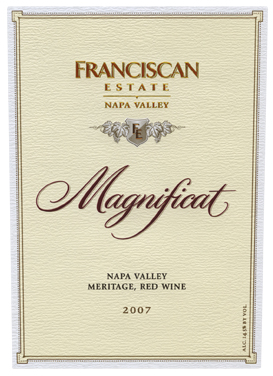 Cabernet Sauvignon and Merlot are the wines I first became familiar with in the
Cabernet Sauvignon and Merlot are the wines I first became familiar with in the  Benessere Vineyards
Benessere Vineyards The
The